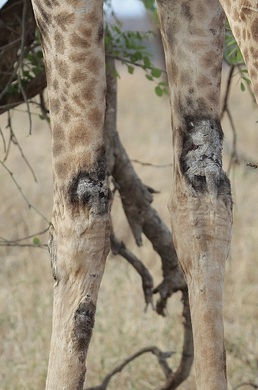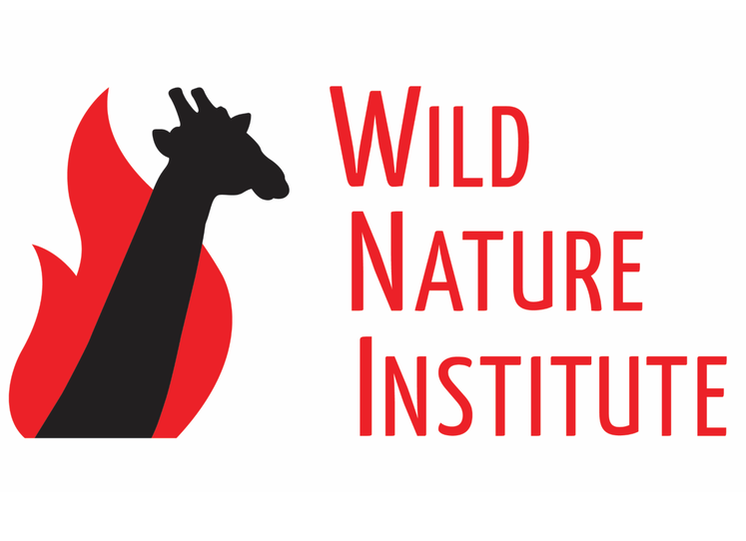 Lesions such as these on the forelimbs indicate giraffe skin disease. Lesions such as these on the forelimbs indicate giraffe skin disease. New research from Wild Nature Institute scientists published today in the Journal of Wildlife Diseases documented 'Soil correlates and mortality from giraffe skin disease (GSD) in Tanzania.' Giraffe skin disease is a disorder of the skin that is characterized by crusty lesions on the posterior forelimbs of adult Masai giraffe. Monica Bond, lead author of the study, said, "Identifying ecological correlates of a pathogen helps wildlife veterinarians and managers understand risk factors, and data from individually identified animals reveal whether the disease affects survival. This is the most recent step in our ongoing investigations into this emerging disease." The disease was first reported in 2000 in Ruaha National Park in central Tanzania. Previous work by Wild Nature Institute scientists found an interesting spatial pattern in the prevalence of the disease. The latest results built on that earlier finding and found giraffe skin disease was most prevalent on low fertility soils (as measured by cation exchange capacity or CEC, a common measurement of soil fertility). If parasites such as nematodes or tsetse flies are involved in giraffe skin disease, differences in soil may influence ground-dwelling life stages. Soil characteristics may also impact the nutritional status of giraffes through vegetation quality, thus affecting their susceptibility to the disease. "We found no mortality effect of giraffe skin disease in Tarangire National Park," said Bond, "indicating that currently giraffe skin disease is unlikely to warrant immediate veterinary intervention in this park." Movement of infected giraffe remains an unexplored aspect of GSD effects, but limited mobility could lead to lower survival or reproduction if climate, habitat, or predation factors change from current conditions in Tarangire. Monitoring in Tarangire will continue to ensure early detection if GSD-afflicted animals begin to show signs of increased mortality or other negative effects.
Learn more about Wild Nature Institute's Masai giraffe research and conservation work at www.wildnatureinstitute.org/giraffe.html
0 Comments
Your comment will be posted after it is approved.
Leave a Reply. |
Science News and Updates From the Field from Wild Nature Institute.
All Photos on This Blog are Available as Frame-worthy Prints to Thank Our Generous Donors.
Email Us for Details of this Offer. Archives
July 2024
|
|
Mailing Address:
Wild Nature Institute PO Box 44 Weaverville, NC 28787 Phone: +1 415 763 0348 Email: [email protected] |
|


 RSS Feed
RSS Feed
